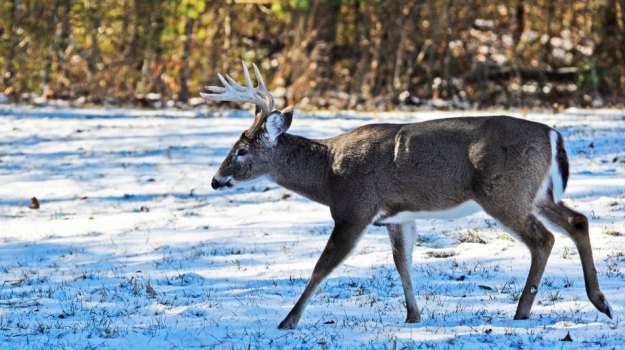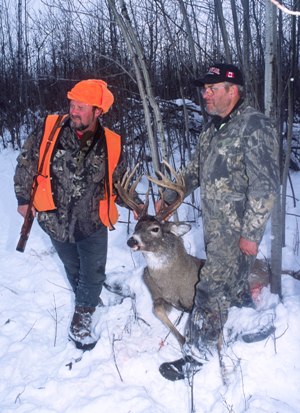
I’m primarily a bowhunter, and I’m often asked how I draw effectively in below-zero weather. The first step I take is as soon as I get to my stand, I screw in my bow hanger. I want my bow to hang, so I have to make very little movement to take the bow off the hanger when I’m ready to make the shot. Many times a number of deer may be in front of me, and with all the leaves off the trees in the late season, the deer can spot just about any movement I may make. That’s why I keep my movements to a minimum.
After I hang my bow, I then take it off the hanger and draw the bow, like I’m actually shooting it, to make sure my peep sight is properly aligned with my sight pin, and my bow isn’t making any noise. I wear an armband to insure that none of my clothing interferes with my bow, the arrow or the string. This way I know that the material on the arm of my jacket won’t interfere with the string or the arrow when I release that will cause an erratic arrow flight.
 I also want to make sure that my body is in position to take a shot, whenever a buck deer presents a shot. As soon as I see deer starting to move out in the field, I stand up in my stand and make sure I have my feet positioned correctly to take the shot in almost any direction from which a buck may come. If I spot a buck, I begin slowly and quietly shifting my feet and my body to get into position to take the shot. At the same time I’m moving, I’m watching the deer’s body position to make certain that the buck doesn’t see me. I make those movements long before the buck steps into the place where he needs to be before I take the shot.
I also want to make sure that my body is in position to take a shot, whenever a buck deer presents a shot. As soon as I see deer starting to move out in the field, I stand up in my stand and make sure I have my feet positioned correctly to take the shot in almost any direction from which a buck may come. If I spot a buck, I begin slowly and quietly shifting my feet and my body to get into position to take the shot. At the same time I’m moving, I’m watching the deer’s body position to make certain that the buck doesn’t see me. I make those movements long before the buck steps into the place where he needs to be before I take the shot.
Taking a buck with a bow in the late season presents many problems for the hunter and also many moves that must be thought through to prepare to get ready to draw and take the shot. However, since Nicole and I also are filming our late-season deer hunts, that filming creates a whole other set of problems with which we must deal. Cameras don’t operate well in sub-zero conditions. We often have battery issues and must remember to keep our batteries warm to insure they function properly. Our tripod heads and the mechanical arms for our cameras sometimes will freeze. So we wrap the tripod heads with a neck gaiter and put handwarmers inside the neck gaiter to keep the lubricant warm in the head. Then we can turn the camera to follow a buck deer.
One problem we frequently have is if someone breathes into the eyecup of the viewfinder, that moisture will freeze up instantly and doesn’t evaporate off the eyepiece like it will in warmer weather. Then whoever is running the camera can’t see through the viewfinder. When Nicole or I are running the camera, we not only must make sure we have the buck deer in the viewfinder and that we can move the camera to follow the buck, but we also must be conscious of breathing away from the camera to keep from getting ice crystals in the eyecup of the camera. Mistakes made during cold weather are much more amplified than they are when you’re hunting in not-so-cold weather.
Day 2: Taking Care of Your Equipment in Extreme Cold Weather
Tomorrow: The Importance of Noticing Small Things in the Late Season to Be Successful



























